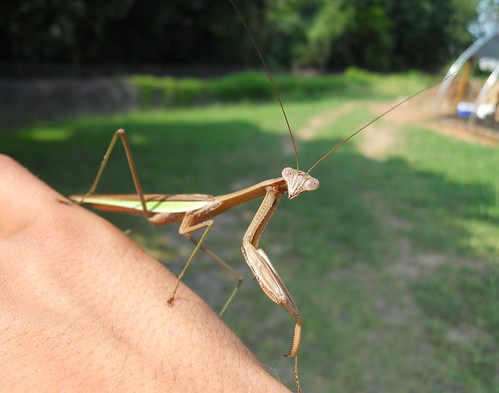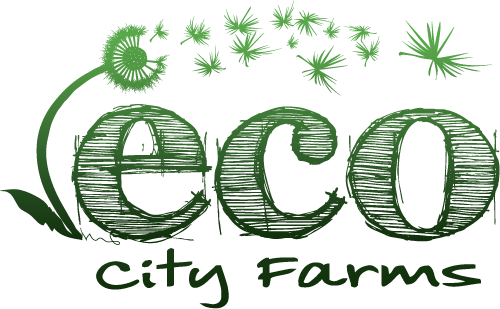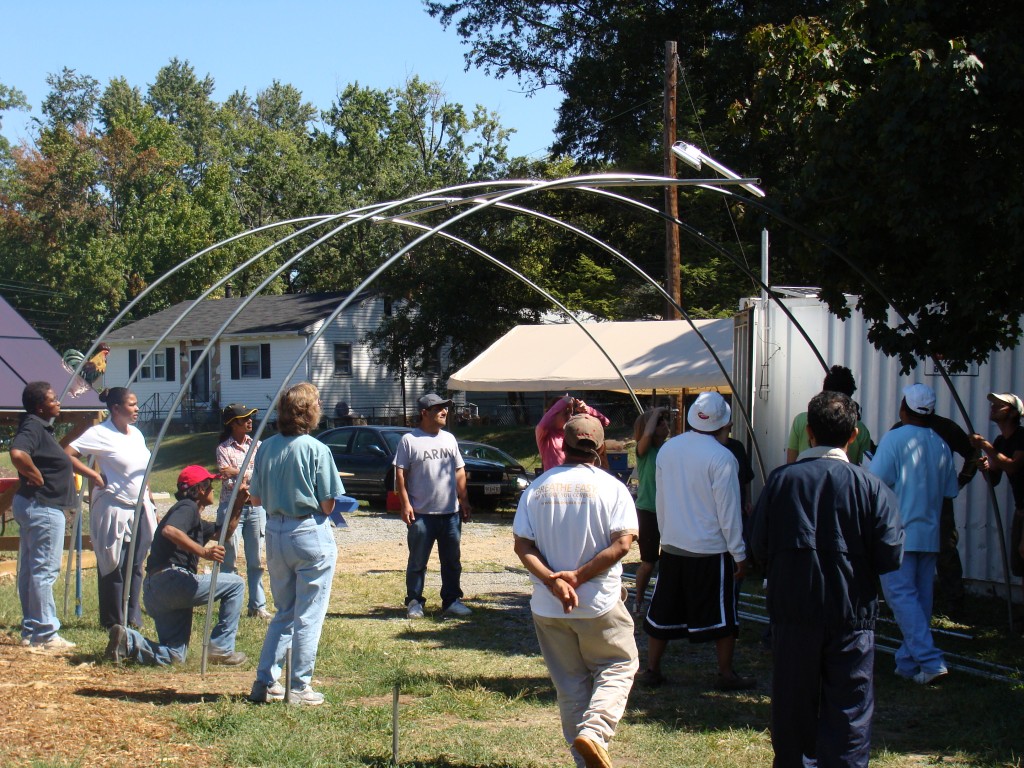Hoophouses, Worms and Lettuce Galore!
We had a wonderful day at the farm yesterday, though unfortunately with not as many volunteers as we had hoped to see.

ECO’s new guard! He needs a name, please send in your suggestions.

Christian returned from Growing Power’s conference last week and, as promised, brought back a carful of red wriggler worms! Don’t they look lovely? These creatures are incredibly beneficial for the soil, and so we put a handful of them every 15 feet in the crop beds and also into the 4 compost bins. They are very happy in their new homes and doing their thing (eating and providing us with rich soil)! The compost-worms have enough food to sustain them for 3-4 months. After this time, we will harvest the vermiculture and use it on our plants. How do we get the worms out? The worms are hungry before when we are ready to collect the vermiculture, so we put a window screen with fruit and vegetable scraps on top of the bins and within a matter of hours, sensing the food, they come up onto the screen. This way we recover about 90% of them to be used again. The vermiculture is removed from the bins, ready to be used on the beds or to make compost tea!

Our busy bees! Jose, one of the New Urban Farmers, gave us a short lesson on bees. His advice to new beekeepers: “If you don’t want to get stung, don’t look them in the eye.” He says, we’re lucky our bees are very mellow and non aggressive, so it’s easy to work with them.

Putting up the purlins on hoophouse number 3. We’re adding extra poles to the hoophouse so that we can hang two rows of pots from them to utilize vertical space. The pots will hold cilantro, spring mix and spicy mix lettuce.

Volunteers thinning the beets. Seedlings have to be thinned to give the beet vegetable room to grow.
This week the Urban Commercial Agriculture class from Prince George’s Community College completed part one of two on How to Build a Hoophouse. A hoophouse, or high tunnel, is a low-cost greenhouse that is heated, usually only passively, to create a controlled environment year-round. With the help of these structures farmers can get a head start on the growing season or produce when it’s cold. Plus, the plants grown in hoophouses are often of better quality.

Bending metal for the hoophouse! With the help of this wooden construction (called a jig) you too can be a Hercules.

Planting the mixed lettuce in trays, in order to ensure successful sprouting. Once the lettuce sprouts, we will transplant it into the beds.
After the class and hard work on the farm, the New Urban Farmers surprised us with a barbecue!

Roy brought homemade peanut satay and long beans from his farm, as well as home-squeezed apple juice.

Yummy quinoa salad with cilantro from the farm.
The plants are looking great:

More spinach on the beds! The long skinny leaves are called the seedling leaves, while the new round leaves are the true leaves of the plant.
Here you can also see the geothermal heat pump peeking out of the bed. This will be used to heat the hoophouses during the cold winter months, by using the warmth from the earth. More on this soon!
Come visit us at the Crossroads Farmers Market on Wednesday from 3-7 pm at 7606 New Hampshire Avenue in Takoma Park, MD, just off 193. And to entice you more, one of the new urban farmer trainees (Jose Castillo) is bringing his final batch of locally-produced pure honey. At least come get a sample!

Hope to see you at the farm!
Peace and Carrots,
Natalya and the ECO crew







Possible name for the Guard Rooster: Allen (…in honor of Will Allen, founder of Growing Power in Milwaukee)
Another possible name: Wendell (…in honor of the Wendell Berry, Kentucky farmer, poet, and advocate for sustainable agriculture)
Great stuff going on at the farm! Beautiful photos too! As to a name for our feathered mascot, how about Chanticleer or “Chant” for short? (refer to Chaucer’s “The Nun’s Tale”)
Nice update, Natalya!
How about naming the new friend, “Master of Peas” or “M.P.”, as kind of a play on the name of the old farm site. Or maybe just “Ed” in honor of the new farm site, Edmonston….
The rooster could be called “Pasha” or “Alyosha” – named after the brains or the heart of the farm (based on two characters from Russian literature!)
Awesome fotos 🙂